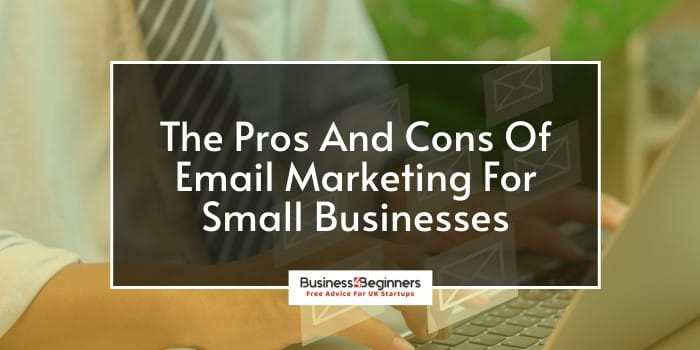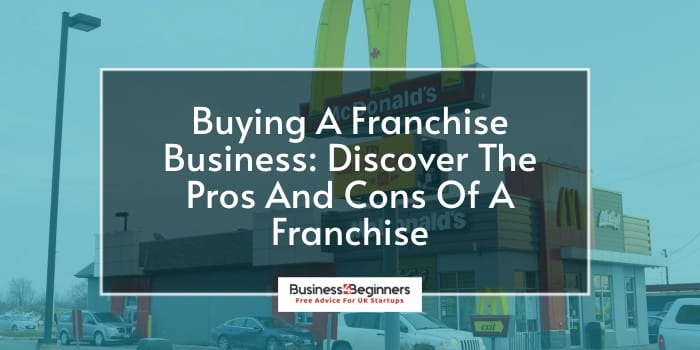Email is an amazing way to get in touch with your customers, subscribers, or prospects, wherever they are.
For small businesses in particular, email is a cost-effective way to send personalised messages to your customers, build brand loyalty and get your business at the top of mind.
But like with any marketing strategy, email marketing comes with its own set of advantages and disadvantages.
In this guide, we’ll delve into the advantages and disadvantages of email marketing for small businesses, giving you all the information you need to make the right decision and build a winning email strategy.
Ready to get started?
Not all emails are the same

There are different types of emails that you can send out to your customers, each with different purposes and messages. Generally speaking, the three main types of email are:
- Promotional emails, which promote a certain item, sale, or event. They’re designed to get our customers to act and buy your products.
- Informational, such as newsletters or announcements about a brand or company you follow closely.
- Transactional emails, like the ones that tell you that your order is confirmed or has been dispatched.
Although transactional emails are incredibly useful and a good way of building relationships with your customers, we’ll be focusing mostly on promotional and informational emails within this guide.
What are the benefits of email marketing?
Email marketing has a lot of benefits for businesses of all sizes. We could spend all day reviewing the benefits and successful case studies, but it all boils down to the following.
1. Email lets you communicate directly with customers

Unlike other forms of marketing, like social media posts or advertisements, you send a message directly to the identified customers’ inbox. Emails allow you to get personal with the messaging for maximum effect.
For example, let’s say you have several potential customers who have looked at an item or service from you before but haven’t purchased it. They might have had it in their basket, viewed a demo, or even spoken to you about it.
They’re interested, but they need help over the line.
If you make an email list from these customers, you could send a targeted email with a discount code or even extra benefits and copy about the item, prompting them to take the next step.
2. Email is a cost-effective marketing strategy
Email is one of the lowest-cost marketing strategies that you can use.
You’re not paying for advertising or spending a lot of money or time making video content. You’re just putting together a targeted email for your audience, which can have more significant results and a better return on investment rate. In fact, it has one of the most lucrative ROI (Return on Investment) of 4400%.
Recommended Email Software:
Even if you use mailing software like MailerLite, free plans are available to get you started with email marketing. Under the MailerLite free plan, you can send up to 12,000 monthly emails as well as gain access to features such as:
- A drag & drop email editor
- Email automation builder
- Websites (You can read our review of their builder tool here!)
- Up to 10 landing pages
- Signup forms & pop-ups
In the first 30 days, you’ll also gain 24/7 email and chat support to help you get up and running like a pro.
Click here to see what else MailerLite can offer you.
3. Email builds relationships and loyalty
Every email and piece of communication that you send to your customers is another reminder of who you are. In other words, it’s a great way to preserve brand awareness and build a stronger relationship with your customers.
For some businesses, email is one of the key staples for consumers. For example, Lauren runs a personal fitness business, hosting various fitness classes. Every month, she emails her database with the upcoming timetable, special classes, and the 1-to-1 spaces she has left.
This email isn’t just informational for her customers. It also acts as a reminder to book back onto their favourite class while giving them a nudge to try something new.
Just be sure not to spam, as that’s a sure-fire way to get classed as junk.
Lost the buzz for your business?
Starting a business is exciting. Succeeding is rewarding. The bit between is hard, repetitive, and full of self-doubt.
The Lonely Middle Club (From Business4Beginners) helps you through it:
Get support and advice from other small business owners
Remove the self-doubt that’s holding your business back
Learn techniques and strategies to grow your business faster
Be inspired with our exclusive ‘swipe’ file and AI-powered tools
No pressure – work at YOUR pace, towards YOUR goals
—
The disadvantages of email marketing
In the interest of fairness, it’s now time to talk about the downsides of using email marketing for your small business. After all, only if you know both, the advantages and disadvantages of email marketing, will you be able to decide if it’s the right strategy for your small business.
1. It requires time and resources

Email marketing takes time, resources, and depending on the software that you use to send out emails – money. All of these are in short supply for small businesses, especially if you’re doing everything yourself.
Email marketing can be a useful tool, but it also relies on having a list of emails to send it to. So, if you’re just starting up, email marketing might be a later-option while you focus your energy elsewhere.
If you’re looking for ways to build up your email list, see our guide on how to build an email marketing list here.
2. It’s hard to get seen
By 2026, 376 billion emails are expected to be sent and received each day worldwide. Right now, people receive an average of 121 emails per day.
Emails are a great marketing tool, but they can be incredibly difficult to stand out amongst the sheer volume of information that people are already receiving day in and day out. The more emails a person receives, the less likely they are to notice yours. Which means you have to work extra hard to stand out.
And to make it more difficult, inboxes have strict spam filters that can stop new contacts from showing up in a person’s inbox, meaning your email is never seen by your customer.
3. You need to be data compliant
Having a great email marketing strategy relies on having a great email list. But you do need to be careful with how you build and store customer data, as improper use could land you in trouble.
In the UK, you have to comply with GDPR rules. This means that you need to get permission from users before you can sign them up to your list, that you are using their data correctly, and you have sufficient security, so their data is not lost or accessed unlawfully.
For more information on GDPR, check out the GOV.UK website.
Assessing the advantages and disadvantages of email marketing
Like any form of marketing, email marketing has its disadvantages, including the time and resources to build an email list and strategy, having to comply with GDPR regulations and fighting to make your way out of the spam filter and to the top of someone’s inbox.
Despite these downsides, email marketing is an incredibly useful tool that allows you to connect with your customers, wherever they are. It’s a great way to build relationships, promote products or services, and increase sales and brand loyalty.
As we’ve pointed out in this guide, email is one of the lowest-cost marketing strategies that you can use with an incredible return on investment.
Ready to make email work for you? Discover our guide on how to create an email marketing list here.








